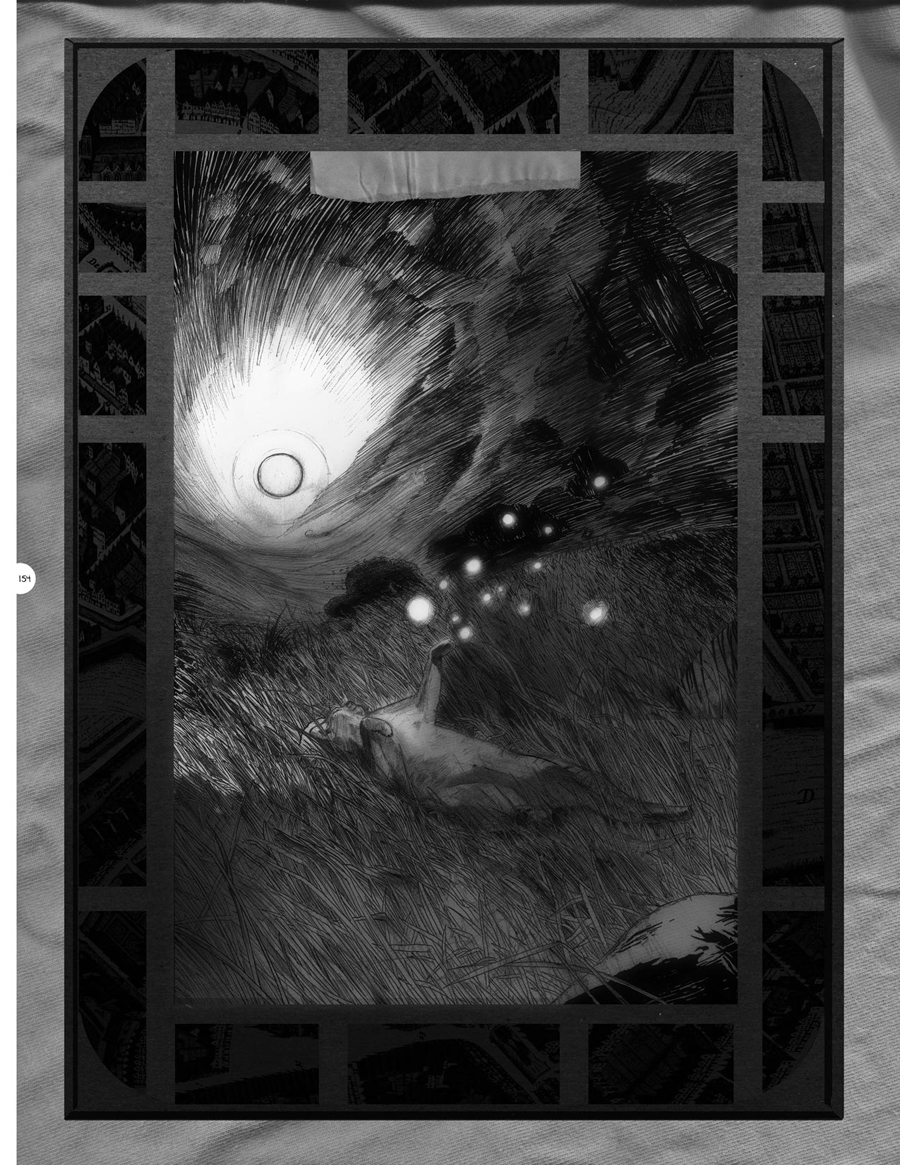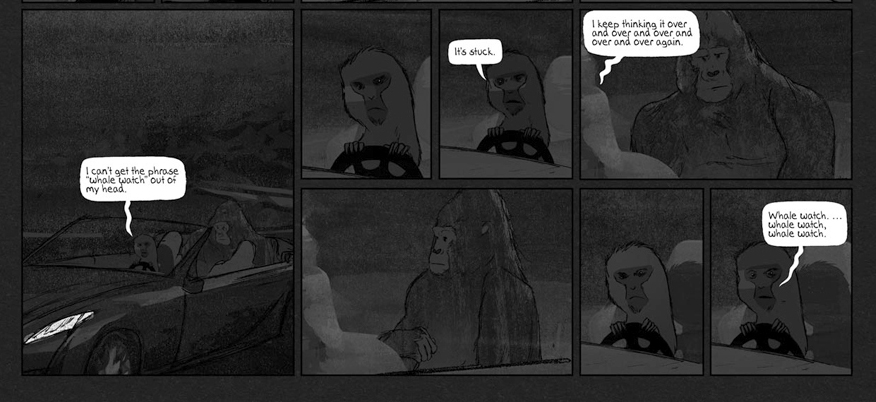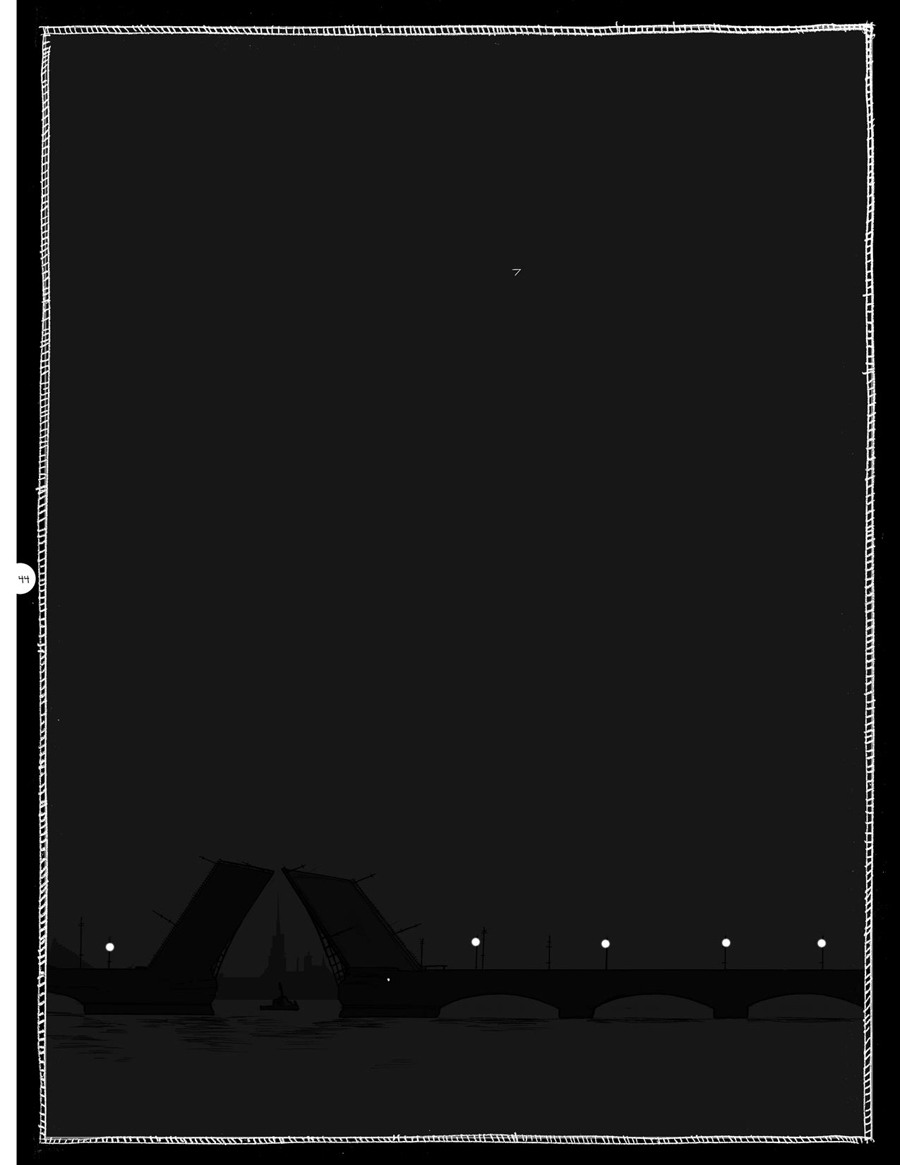I was prepared to hate Duncan the Wonder Dog before reading it—it had been marketed to me as an animal-rights muckrake, a fiery expose of human cruelty neatly presented with the handy pitch “What if animals could talk?” Duncan is a visceral showcase of what is cruel and complicated about human-non-human interactions. Yet a world where people can speak with a cow en route to the slaughterhouse, and converse with their pets, cannot easily illuminate why we domesticate, enslave, and slaughter animals. It’s not that we wouldn’t brutalize animals if we could speak to them; we just would have developed completely different societies to do so.
Duncan is emotionally convincing, but the problem isn’t that animals are mute, or that their minds are unknowable. It’s that their alien-ness doesn’t offer humans anything we are looking for, (past escaping from human experience altogether.) If a cow could talk deeply with you, or make you laugh, or beg for mercy, it would radicalize your relationship with her—and what a cow could mean to you. This doesn’t preclude violence, distrust, and fear—but it would complicate things greatly. The consumption of human-like minds would invoke cannibalism, the exploitation of human-like minds would resemble racism. The fact that animals can’t connect to us on a ‘human’ level, (and when they do, we have often projected it,) plays a large part in our indifference and anthrocentricity.
Duncan the Wonder Dog is a fantasy about connection with non-humans and its accompanying moral clarity. Paradoxically, Duncan is a fundamentally non-escapist work, as it resists building an alternate reality, applying seductive ideological frameworks, or side-stepping through gorgeous art. Duncan froths and tears against the solipsism that underlies human cruelty to both people and animals. For creator Adam Hines, language, representation and ideological frameworks are not tools to expose the injustices of the world we live in, but are the source of the problem. As an activist work, Hines might shoot himself in the foot, but the wound is part of his work’s brilliance.
Duncan the Wonder Dog: Show One is the first 400+ page installment in a proposed series of nine. At first glance, Duncan greets readers with scattered grids of panels, scratchy drawings, several breeds of collage, and a hundred shades of computerized grey—far from the legibility of most black and white graphic novels. Duncan is set in a world much like our own; the two main departures are the absence of our contemporary political landscape , and that animals can talk. And not just talk—nonhuman characters are most often depicted as ‘voices of reason,’ waxing philosophically with each other, and are given names from classical history. Most characters appear briefly in small episodes or fragments, and never return—the cow on the way to the slaughterhouse, a fisherman bullying a cormorant, the zealous leap of a grasshopper. These anecdotes expand and distract from the focus of the backbone plot, which is set into motion when an animal terrorist group bombs a Southern Californian university, killing hundreds of students. The stand-alone chapters are powerful and simple, but it’s the magnetic, returning cast who best argue the eruptive, messy grace of the whole book, and who Hines renders with mystery and redemptive kindness.
Even as Hines provides well-rounded characters and a multi-faceted world, Duncan the Wonder Dog thankfully resists the escapism of world-building. I can easily imagine a Duncan serialized by Vertigo ala Y the Last Man: suddenly, all the animals in the world can talk! Or: In an alternative reality where animals have always spoken…
Duncan doesn’t explain itself, and hopefully Hines won’t bog down future books in exposition. Who knows whether the animals are speaking one language, if they have vocal chords, or whether everyone speaks a sort of pre-Babel dialect. There’s an owl that speaks Italian at one point– and the exceptions give Duncan an automatic, fever-dream quality. They remind fans and readers that Duncan is a book written in our world, and is not a separate universe to invest in.
Alternatively, oration, metaphor, and Truth are also forms of escapism. They rely on structures that can’t do justice to the complexity of existence, but dangerously replace it. Hines refuses to set up symbols or straw-men, and instead relies on the characters’ complexity and interiority to complicate what they say. The only philosophies that go unchallenged are the most riddle-like, and the least proscriptive.
Duncan the Wonder Dog is breathtaking. For a treatise on frustration, it’s an exhilarating and graceful read—its major fault might be that it is entertaining at the expense of being as nerve-wracking as the subject demands. Its balance of pathos, thrills and wonder keep pages turning, whether or not readers are concentrating on the convoluted conversations of the non-human characters. Most crucially, the comic format periodically discombobulates. Collages bloom over a story-book disruption. A coyote-ish children’s show host trespasses into the psyche of a sullen investigator, and its initially unclear whether this is simply a literary transition, or the man’s hallucination. A character opens a diary, and the story slips into a freefall inside it. If you trace the wires back, you can find where the book repeats its arguments about ‘points of entry’ or ‘naming’ within a abstracted flock of birds, a school of fish, or a curling hedgehog.
Or in a flashback, where a naïve government agent sits across from a doubtful terrorist suspect, and her cat begins to knead his chest.
Or the conversation between a standard politician and a starling.
Or in the friendship between Tivona, a fiery young journalist with a political agenda, and the disarming mandrill Voltaire, an influential player in a shadowy business enterprise. And in the moment when the reader wonders a little about the nature of this friendship. And then, when Tivona drives late at night to reach Voltaire’s beachfront house, and the reader finds them in a kitchen, speaking with an unmistakable intimacy, and as Tivona makes her way to the bathroom, she sheds her clothing piece by piece.
It all comes back to connect, but it does so with difficulty, and while Duncan’s language and images are just as frustrated, its cinematic pacing is not.
A fluid, 18 page excerpt from the center of the book is here.
Pompeii, the tiny macaque terrorist at the heart of Duncan the Wonder Dog, is theatrical, rabid, and hypocritically utilizes the same human frameworks she destests—not without irony, but not with much of it. This parallels Hines, as he hysterically throws himself against the limitations of language and representation—in a comic book, of all things. While Duncan desperately attempts to reach outside of human perception, the anthropomorphic conceit of ‘talking animals’ accentuate the problem—Pompeii struggles not only against the exploitation of animals, but how the world and its inescapable language infects her.
The book can’t divorce itself from human narrowness, but that’s not the point. Hines obligingly rolls the boulder back up every time it hurtles down, and in the process, draws a book that reads like music. Duncan the Wonder Dog is an orchestrated mess, volcanic, hysterical, and incredibly quiet.
____________
One additional comment: I’ve noticed critics swooning over Hine’s technical skill—whatever compliments I have to say about his artistry, fine draftsmanship is not among them. Hines adeptly employs multimedia collage, and its best to understand the drawings this way too. The backgrounds are traced-over and digitally filtered photographs. The drawings have a blotched, sketchy line quality, low contrast, and graphically-speaking, are often very weak. If Hines could have drawn it better, he probably would have, and I bet he’s getting better all the time (with eight books to go.) This scrappy maximalism visually argues the book’s fragmentation. Hines has a field day with the tackiest and most-maligned techniques in comics-making, His process challenges the imagination of the cartoonist at his draftsman’s table, and the unnecessary artistic responsibilities that cartooning, to some readers, implies. I believe Duncan the Wonder Dog is an incredible love-letter to comics—Hines drew it not for a love of drawing, but for the strengths of the form.





This is a really interesting piece, Kailyn. I liked this line especially:
“oration, metaphor, and Truth are also forms of escapism.”
Especially putting metaphor in there (and the juxtaposition with Y: The Last Man, too.) Metaphor’s such a seductive (and quite possibly inescapable) part of fiction, and especially science-fiction or fantasy. It’s interesting to think about the downsides of that, and the possibilities that open up when the metaphors don’t work.
Fascinating critique! On a related vein, have you seen Gerry Alanguilan’s Elmer? I’ve not finished reading my copy — got sidetracked months back — but it’s an outstanding book…
—————————
ELMER is a window into an alternate Earth where chickens have suddenly acquired the intelligence and consciousness of humans, where they consider themselves a race no different from whites, browns or blacks, and push to recognize rights for themselves as the newest members of the human race.
ELMER tells the story of a family of chickens who live and struggle to survive in a suddenly complicated, dangerous and yet beautiful world.
—————————-
http://alanguilan.com/sanpablo/elmer/
http://newsinfo.inquirer.net/105247/what-if-chickens-demand-equality
http://forbiddenplanet.co.uk/blog/2011/gerry-alanguilan-on-creating-elmer/
Re Noah:
Thank you! And I’m glad you zeroed in on that line, and I want to expand on it at some point… Since high school, I’ve personally been very obsessed with how mystically True a book or movie or comic feels, but I think its psychologically a less noble pleasure than I’ve assumed. I’m interested in what role it has in canonization…
Re Mike:
Thank you for reading! I’ll have to look into ELMER… It seems like a great example of what I was trying to talk about with Y the Last Man.
Pingback: » Sisyphean Lit: Adam Hine’s Duncan the Wonder Dog
If nothing else, Duncan is impressive for its sheer ambition. It’s like the young cartoonist’s equivalent of the young novelist’s attempt to write the Great American Novel.
..but there’s things else, too. I especially liked the long digression with the victim family.
The printing’s a bit (well, a lot) too murky, tho’.
Pingback: » AVAN LAVA @Glasslands Gallery, 2/11/12
I’ve just finished a first reading of Duncan and am bowled over by it – looking forward to pulling things together in a follow-up reading. It’s easily the most remarkable graphic novel I’ve read. Thanks for a fascinating review. Two things. Firstly, coming from what one would probably best call a cultural studies/narrative analysis perspective, I find the way that words & images (incl all aspects of design) have been brought together to construct a narrative is groundbreaking for the graphic novel form – and rather than seeing the design as inferior, as you suggest, I have the sense that rather than attempting to apply the principles of ‘good design’, he’s aiming for something fat more radical: how to visually represent (or at least allude to) a perspective that goes beyond the anthrocentric. I’ll have a better idea of whether of not I can substantiate this position after my next reading of it. Secondly, any ideas about the rather elliptical choice of title…..